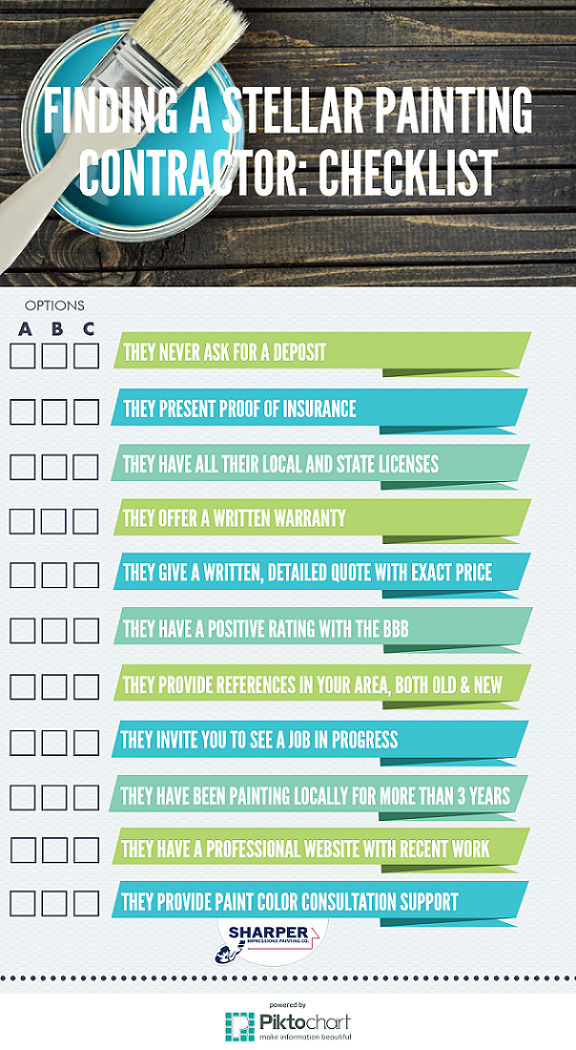Just How Weather Can Impact Your Outside Painting Task
Just How Weather Can Impact Your Outside Painting Task
Blog Article
Written By-Mosegaard Dowling
Comprehending exactly how weather conditions can influence the end result of an outside paint endeavor is paramount for attaining a perfect finish. From temperature fluctuations changing paint adhesion to humidity degrees impacting drying out times, each element of weather plays a considerable function in the success of your task. Furthermore, wind rate and precipitation can present unforeseen challenges that may compromise the quality of the final result. As we navigate through the subtleties of weather condition's effect on exterior paint, it ends up being obvious that thorough preparation and strategic timing are critical for ensuring a specialist and long lasting result.
Ideal Temperature Variety for Painting
When thinking about exterior painting tasks, the optimal temperature level range plays an essential role in attaining optimum results. Painting in the ideal temperature level problems makes certain that the paint sticks effectively to the surface area, dries out evenly, and cures effectively. Generally, the suggested temperature variety for external painting is between 50 to 85 degrees Fahrenheit.
Paint in temperatures below 50 degrees Fahrenheit can lead to concerns such as inadequate paint adhesion, long term drying out times, and a raised possibility of breaking or peeling.
On the other hand, paint in temperatures over 85 levels Fahrenheit can cause the paint to dry too promptly, leading to blistering, bubbling, and an unequal finish.
To achieve the best results, it is important to check the weather report prior to beginning an exterior painting project. Preferably, objective to repaint during light weather with moderate temperatures and low humidity degrees.
Results of Moisture on Paint Drying
Humidity degrees significantly affect the drying out procedure of paint put on exterior surfaces. Recommended Looking at can extend the drying time of paint, resulting in potential problems such as leaking, spotting, or even the development of bubbles on the painted surface area. Excess wetness airborne reduces the evaporation of water from the paint, preventing the curing process. This is especially troublesome for water-based paints, as they count on evaporation for drying.
On the other hand, reduced humidity degrees can additionally impact paint drying out. Very dry problems might create the paint to completely dry also rapidly, causing bad bond and a harsh surface. In such cases, including a paint conditioner or spraying a fine mist of water airborne can assist control moisture degrees and boost the paint result.
To guarantee optimal drying out conditions, it is suggested to paint when the moisture degrees range in between 40% and 50%.
Surveillance moisture degrees and taking appropriate measures can assist attain a smooth and durable paint finish on exterior surface areas.
Wind and Precipitation Factors To Consider
Wind rate and precipitation are essential variables that significantly affect the success of an exterior paint project.
When it involves wind, both rate and direction are important factors to consider. recommended site can trigger paint to dry as well swiftly, resulting in a subpar finish with prospective issues like breaking or unequal texture. Furthermore, wind can carry debris that might stick to the damp paint, causing blemishes. Therefore, painters must intend to service days with light to moderate winds for ideal paint conditions.
On the other hand, precipitation, whether rain or snow, can be incredibly damaging to the result of an exterior painting job. Wetness from rainfall can impede paint attachment, triggering peeling and bubbling over time. see this page is vital to avoid paint throughout wet or snowy weather condition to guarantee the durability and top quality of the paint job. Painters must also allow enough time for the surface area to dry completely after any kind of precipitation before commencing or returning to the painting procedure.
Conclusion
To conclude, weather conditions play a considerable role in the outcome of an external paint project. The ideal temperature level array, humidity degrees, wind rate, and precipitation all add to the success or failure of the paint work.
https://cabinetpaintersnearme31086.jts-blog.com/32884094/discover-one-of-the-most-recent-approaches-and-developments-in-residential-painting is important to consider these variables and plan appropriately to make certain appropriate paint attachment, drying times, and general quality of the finished product.
